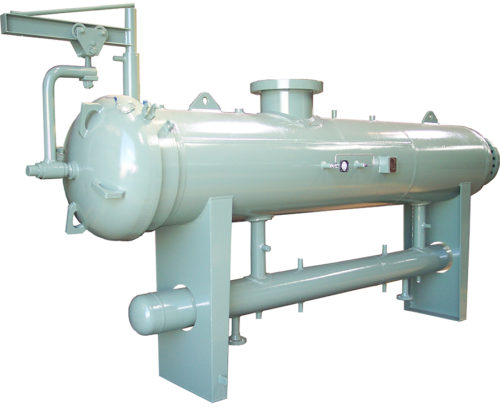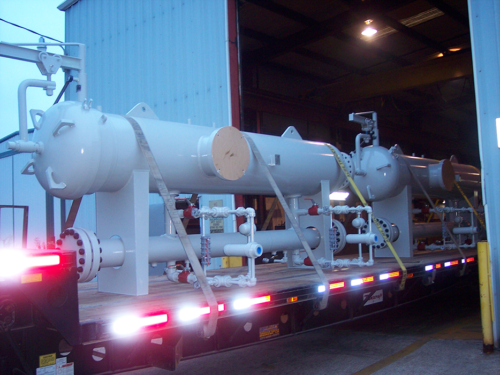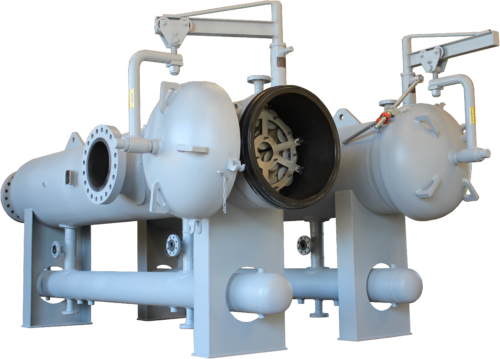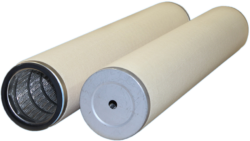Filter-Separators for natural gas service
The Winston/Royal Guard filter-separator is the most dependable solution for removing liquid and solid particles from natural gas for the protection of compressors in transmission lines and at plant entrances, among others, and manufactured in our ASME Code certified facility.
The transportation of natural gas requires the removal of contaminants in every process, from the gathering system to the final user. Water will damage compressors, oils and dust will compromise the efficiency of dehydration and amine units, and pipeline dust will damage valves, meters and other downstream equipment. Filter-separators are often chosen over individual filtration and separation products as they have the ability to capture both liquids and solids in a single unit.
Filter-separators provide clean gas for:
- Compressors
- Glycol and Desiccant dehydration systems
- Plant fuel gas
- Amine systems
- Metering stations
The advantages offered in filter-separators are due to the configuration. In order to utilize maximum surface area the specifically designed filter cartridges are positioned so that the flow is outside-to-inside in the first section of the housing. This flow path captures solid particulates and coalesces any aerosol and larger entrained liquids. These coalesced liquid droplets then flow into the second chamber where they are removed from the gas by either a vane or centrifugal separation device.
A separation device in the second section of the filter-separator engages and removes the coalesced and enlarged liquid droplets by either impingement as the gas flows through the “tortuous path” of the vane internal or through centrifugal force with the Directional Blade™ internal. Either separator internal will effectively remove the enlarged droplets from the flow and provide clean, dry gas at the outlet.
Efficiencies to 99.9% of 1 micron liquids and solids removal can be achieved with the Winston Type 150 Filter-Separator. Deformable gels, iron sulfide (FeS), dust, water, paraffins, and condensates are efficiently removed from a natural gas process ensuring the protection of downstream equipment.
Available in horizontal and vertical configurations, Winston/Royal Guard’s Type 150 filter-separators are designed to fit each application for superior performance. The filter-separators are designed and manufactured in our ASME Code certified facility.
How it works:
The filter-separator has three stages of liquid and solids removal. In the first stage, moisture-laden gas enters the filter-separator and makes initial contact with the filter pedestals, or pipe risers, where heavier liquids impinge and fall out of the gas flow aided by a loss in velocity and gravitational effects. This liquid then drains out of the vessel housing and into the sump below. In the second stage, the gas stream enters the filter cartridges where solid particulates are captured. Here, aerosol and larger entrained liquid particles, without enough mass to be pushed through by the gas flow, attach to the media fibers. As additional liquid particles enter the media, they merge, or coalesce, with other droplets until they are large enough to be pushed through. These larger liquid droplets are then removed from the gas stream in the third stage by the separator internal and drain to the sump below. The captured solid particulate matter is removed from the vessel when the disposable cartridges are changed out. Gas exiting the filter-separator is 99.9% free of liquids 1 micron and larger and solid particles as small as 0.3 microns depending on filter selection.
Separator Designs:
In addition to the filter section, these filter-separators are available with either the Directional Blade™ centrifugal separator internal or the Vane separator internal. Both designs are highly efficient for removal of liquids and each has its own benefits.
Directional Blade™ Centrifugal Separator Internal:
The Directional Blade™ filter-separator efficiently removes liquid and solid particles from gas and takes up less space with a smaller diameter vessel. The Directional Blade™ with fixed, non-moving blades imparts a spin to the flow, directing entrained liquids and solids to the vessel wall through the process of centrifugal force. Liquids coalesce on the interior surface of the vessel and continue to move along the wall with the spinning flow toward the end of the vessel and the drain. This compact design has cost-saving benefits as well as applications where space may be limited.
Vane Separator Internal:
The filter-separator with the Vane internal is equally efficient. As the gas passes through the tortuous path of the corrugated vane plates, entrained liquid particles are initially separated from the gas due to changes in flow direction. Inertial impaction causes the liquid to separate as it cannot change direction with the gas. Impinging upon the vane surfaces, liquid particles become enlarged through coalescence as they travel along these surfaces toward the pockets in the vane assembly and finally fall toward the drain. Due to its typically larger vessel diameter, this design may contain more filter cartridges with the benefit of longer operational periods between filter change-outs.
Filter Cartridges:
Filter cartridges typically provided in the Type 150 Filter Separator are:
- WCL536 (1) employs a molded fiberglass depth media rated for 98% of 1 micron particle capture. This cartridge offers effective filtration at an economic cost and remains one of the most widely furnished filter separator elements.
- WCL536 (0.3) has a glass fiber depth type media in combination with polypropylene coalescing media with a rating of 0.3 micron at 99.9% efficiency.
- WMGL536 with a depth type graded density microglass media is available with ratings of 0.3 or 1 micron at 99.9% efficiency.
Filter-Separator Options:
Along with specific customer requirements some of the many options available are:
- Horizontal and vertical designs
- Quick-opening closure
- Skid mounted
- Lifting eyes
- Valve and control packages




